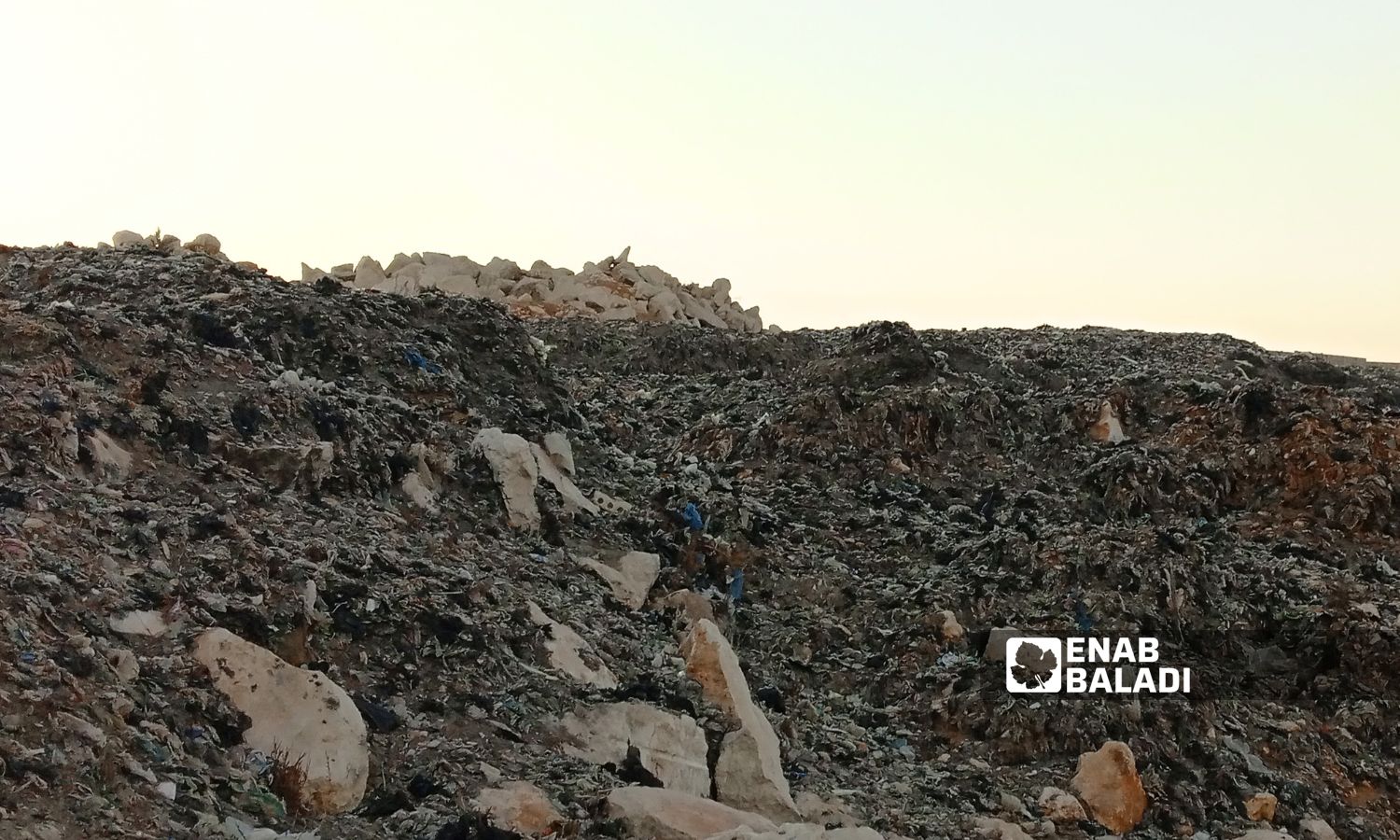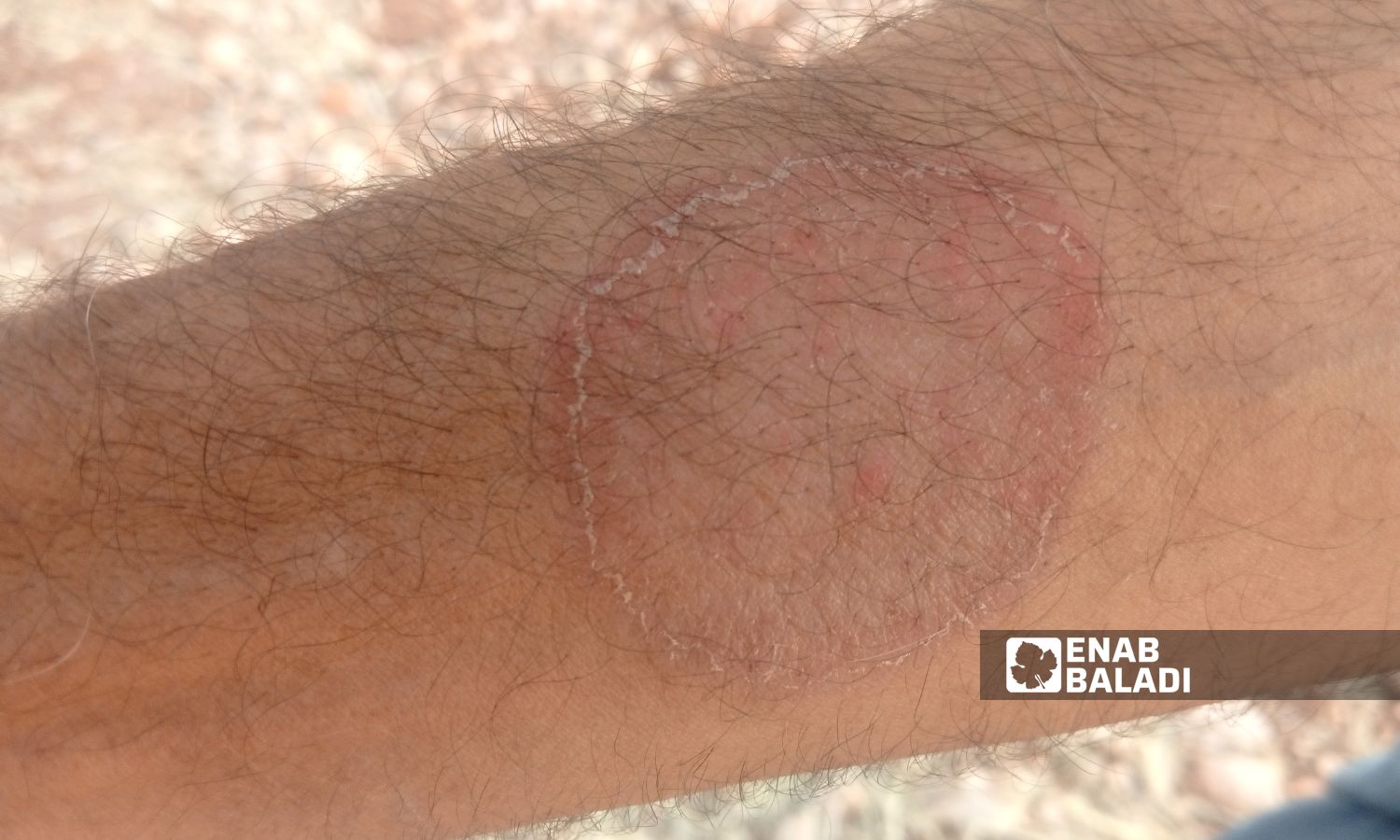



Residents of camps near the village of Hazra in northern Idlib suffer from a nearby waste dump, which has become a source of concern due to its health and environmental hazards, especially in the al-Amal and al-Salihiyah camps.
The dump is a source of diseases for the displaced people, as it is a hotspot for insects and emits foul odors, with primitive initial solutions limited to individual efforts.
Hassan al-Khalif, a resident of the al-Amal camp near the village, said that the presence of the dump next to the camp causes many diseases, including allergies and leishmaniasis, in addition to emitting foul odors that increase when the garbage is burned.
He told Enab Baladi that turning the garbage with a bulldozer to clear spaces in the dump significantly increases the odors, forcing residents to leave the camp to breathe clean air.
Due to the dump, al-Khalif has suffered from breathlessness and chest pain because of the smoke rising from the dump day and night, noting that he needs 2000 Turkish lira monthly to buy medicines for himself and his children.
Al-Khalif mentioned that the flies and disease-carrying insects proliferating from the dump force him to use Par Par insect spray, fearing it may harm his family as it is a chemical product.
Ahmed Abdul Rahman, also a resident of the al-Amal camp, told Enab Baladi that he regularly suffers from skin and respiratory diseases and has leishmaniasis on his hands.

A waste dump located near IDPs camps near the village of Hazra, north of Idlib, September 20, 2024 (Enab Baladi/Mohamed Masto)
Mohammad Hamoud, the supervisor of the al-Amal and al-Salihiyah camps, told Enab Baladi that the presence of a waste dump less than a hundred meters from the residents has a significantly negative impact, adding that the number of affected residents ranges from 1,500 to 2,000 families, with the damage extending up to 10 kilometers.
Hamoud mentioned that many children are infected with leishmaniasis, known as the “one-year sore,” and allergies, in addition to the elderly who suffer from asthma and chest infections, receiving treatment from the residents on their own, which constitutes a financial burden as they need monthly medication.
The World Health Organization (WHO) defines leishmaniasis as a skin disease transmitted through the bites of infected female sandflies, and large leishmaniasis is also transmitted to humans by phlebotomine sandflies from rodents and jerboas.
Hamoud said that the residents have organized protest vigils and appealed to the concerned authorities multiple times without any result, adding that the waste dump has accumulated enormously due to the large number of garbage trucks coming from villages neighboring Hazra.
Residents called for the removal of the dump or regular pesticide spraying campaigns by a specialized team to maintain the health of camp residents and environmental safety.

Skin diseases due to swarming insects in a landfill near IDPs camps north of Idlib – September 20, 2024 (Enab Baladi/Mohamed Masto)
In a previous statement to Enab Baladi, the Syria Civil Defence said that the spread of waste dumps poses a threat to civilians’ health, especially to the respiratory system, considering that having waste dumps near camps is an entirely unhealthy condition.
They added that waste-burning operations sometimes occur to dispose of it, leading to the emission of harmful smoke during the burning process. The dumps also lead to the spread of insects, especially in non-equipped dumps.
Northwestern Syria is home to 5.1 million people, of which 4.2 million need assistance, and 3.4 million suffer from food insecurity. There are 3.4 million internally displaced persons, and two million people live in camps, according to the United Nations. Local statistics, however, indicate that the population ranges between 5.5 to 6 million people.
if you think the article contain wrong information or you have additional details Send Correction